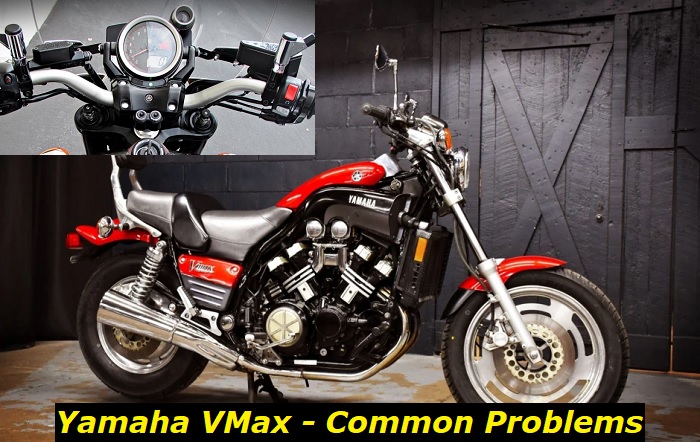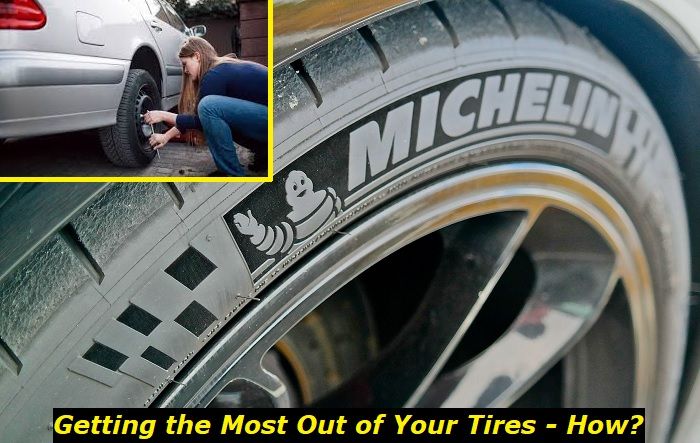Japanese bikes enjoy great renown across the world. Yamaha is no exception. During its heyday, the Vmax model was among their top-selling bikes. Perhaps you've got your eyes set on one of these beauties too. However, since they've been discontinued, getting a hold of one can be quite challenging. And when you do find one, the price will certainly chill you to the bones.
So, is Yamaha Vmax worth your money? Or does it merely hide behind the powerful brand? In this article, we're going to examine some of the most common problems you might run into while riding this bike.

In this article, you'll learn about:
- What makes Yamaha Vmax such a popular bike
- Common Yamaha Vmax issues
- Whether the bike is worth your money or not
Why is Yamaha Vmax so popular?
If the bike's so expensive, what makes people go crazy for it?
Well, for one, it's one of the best motorcycles as far as performance is concerned. Dubbed Mad Max, Yamaha Vmax offers one of the most powerful engines on the market. This makes it respond well to acceleration.
But it's not just the flawless V4 engine that makes it such a joy to ride. The Vmax models also feature power-enhancing technology that further perfects their performance.
Moreover, owners of this bike praised its braking capabilities. The wave-style brakes are much more durable than the common round ones. Thus, you'll pay less for maintenance in the longer run. Its three-position ABS enhances Vmax's braking, allowing you to stop your bike even on a wet road.
Thanks to its aluminum chassis, this motorcycle is extremely manoeuvrable. At low speed, you can turn corners with relative ease.
Since it is a Japanese bike, Yamaha Vmax is naturally reliable. Over the 30 years it spent on the market, it went through very few recalls. This motorcycle was built to last so you'll enjoy it for a long time.
However, we can't say that there were no recalls since its inception. Quite the contrary, this bike has its flaws. Are they enough to tarnish Yamaha's reputation? Read on to find out.
Common Yamaha Vmax Problems
Bad oil pump
This issue affects mostly Vmax models made between 2008 and 2011. This problem led forced Yamaha to issue a recall for the affected models. If you suspect your bike has this problem, then you should be able to get the pump replaced free of charge.
Unfortunately, a bad oil pump is not a problem you can ignore. Every bike needs oil to lubricate the engine components. Without it, the metal parts would grind against each other. The constant friction could eventually damage the engine. The oil also absorbs some of the heat your Yamaha engine produces. As its name implies, the oil pump is responsible for correctly moving the lubricant to and from the engine.
But how exactly can you tell your oil pump's busted? Here are some of the symptoms that point to this issue:
- Low oil pressure: A bad pump won't supply the engine with sufficient oil. This is because the pressure it generates will be too weak to move the liquid.
- High temperatures: Less oil leads to more friction. This generates excessive heat. The oil also cools the engine by distributing the heat evenly across a bigger area. If there's not enough of it, the high temperatures might severely damage your engine.
- Blue smoke: Oil is a flammable liquid. If there's too little of it and the engine gets too hot, it might catch fire. When this happens, you'll notice blue smoke coming from your exhaust pipe. This is incredibly dangerous - avoid riding your Yamaha in such a state.
- Whirring and whining: As the metal components in your engine start to grind against each other, they will produce loud unpleasant noises.
- Stalling: Left unchecked, the friction will slowly erode your engine. Eventually, it will seize and you might not be able to turn it back on. If you suspect that your Yamaha oil pump is bad, have it changed immediately. This is not a problem you can take lightly.
Solution:
The best thing you can do is to replace the oil pump. If your Vmax model is one of the recalled ones, then you be able to have it replaced for free.
High fuel consumption
Despite its stellar performance, Vmax leaves things to be desired when it comes to fuel economy. This is tied to the fact that this Yamaha bike is heavier than its competitors. The greater the weight, the more fuel you need to get it moving. Although used Vmax models might be cheaper, the money might ramp up when it comes to paying for gas.
Solution
Unfortunately, there's no real solution to this issue. If you're concerned about poor fuel economy, then Yamaha Vmax might not be the best choice for you.
Uncomfortable Seating
Because the Yamaha Vmax is so big, you might end up grasping for the ground as you sit on it. If you're more on the shirt side, then this bike might not be for you. Moreover, some owners found the seating straight up uncomfortable. Because of the design, they had to crouch during the ride. While this is great in terms of aerodynamics, it might leave you with an aching back.
Solutions:
Once again, there's not much you can do it here. Our suggestion is to try out the bike at your dealership. If it doesn't feel comfortable, then you should look for a different bike.
Faulty Fuel Pump
This issue affects mostly older Vmax models. A fuel pump is an essential part of every motorcycle. It distributes fuel from the gas tank to the combustion chamber. If it's clogged or broken, it will impact your bike's performance. Expect a lot of trouble on the road.
If you're wondering what a faulty fuel pump feels like, we've prepared this list of common symptoms:
- Misfiring: Because it won't deliver enough fuel to your engine, a bad fuel pump is a common reason behind misfiring. Less fuel means less power. So if your Vmax loses its rhythm all the time, a bad fuel might be to blame.
- Surging: Surging happens when the fuel pump or its lines become clogged. Once the gas breaks through the clog, it will produce more power than usual. This will cause your bike to surge forward even during consistent speeds. Surging is incredibly dangerous at high velocity. If you experience this problem stop driving your Vmax immediately.
- Whirring noises: Just like the oil pump, a bad fuel pump can produce whirring noises.
- Reduced mileage: A broken pump can take its toll on your wallet. If you need to refill gas more often than you're used to, it might be the right time to replace it.
- Stalling: Sometimes, your engine will receive so little fuel that it will just give up. But stalling can be linked to other problems such as a bad battery or oil leaks. However, if it occurs together with the other symptoms, then the issue likely lies with the fuel pump.
- Engine won't start: As the damage spreads, your Yamaha might refuse to start.
Solution:
Replacement will be your go-to option here. While pumps are generally affordable components, you're unlikely to handle the repairs yourself. This is because they are nested deep inside the bike. We recommend trying out DIY repairs only if your mechanical savvy's up to snuff.
Bad Wiring Harness
This issue plagued mainly the 2009 Vmax models. Thankfully, Yamaha issued a recall on the problematic models shortly after the discovery. Some of the wires suffered from high electric resistance values which confused the Engine Control Unit.
Sometimes, your Yamaha wouldn't react when you released the throttle. This caused the faulty models to lurch forward.
Solution:
If you own a model from 2009, you can take it to your nearest dealership. Since it was recalled, they should install an additional grounding wire on your bike free of charge.
2nd Gear Shifting Issues
Some Yamaha Vmax owners report difficulties when shifting to and from the second gear. Although this seems to be a design oversight, we're not aware of any recalls aimed to solve this issue. While this pales in comparison to the previous issues, it's still a nuisance.
Solution:
Regrettably, this isn't something you can fix yourself. The gear case will have to be split open to attempt the repair so you should let a qualified mechanics handle it. It's rather pricey though - expect to pay $600 to $1200.
Final Verdict
So should these problems discourage you from buying a Yamaha Vmax?
Well, it largely depends on the exact model. If you stay away from those made between 2008 and 2011, you should be able to enjoy all the perks this amazing bike brings to the table. Perhaps the most notable one is the stellar performance. You're unlikely to ever ride a motorcycle that can compare to Vmax in terms of sheer power. Although you may experience other issues, keep in mind that every motorcycle has its flaws. All things considered, Vmax's issues tend to be minor.
If you have the money, then Yamaha Vmax will definitely be worth the price. But if you're looking for a more casual bike, other models might be better for you.
About the authors
The CarAraC research team is composed of seasoned auto mechanics and automotive industry professionals, including individuals with advanced degrees and certifications in their field. Our team members boast prestigious credentials, reflecting their extensive knowledge and skills. These qualifications include: IMI: Institute of the Motor Industry, ASE-Certified Master Automobile Technicians; Coventry University, Graduate of MA in Automotive Journalism; Politecnico di Torino, Italy, MS Automotive Engineering; Ss. Cyril and Methodius University in Skopje, Mechanical University in Skopje; TOC Automotive College; DHA Suffa University, Department of Mechanical Engineering





Add comment